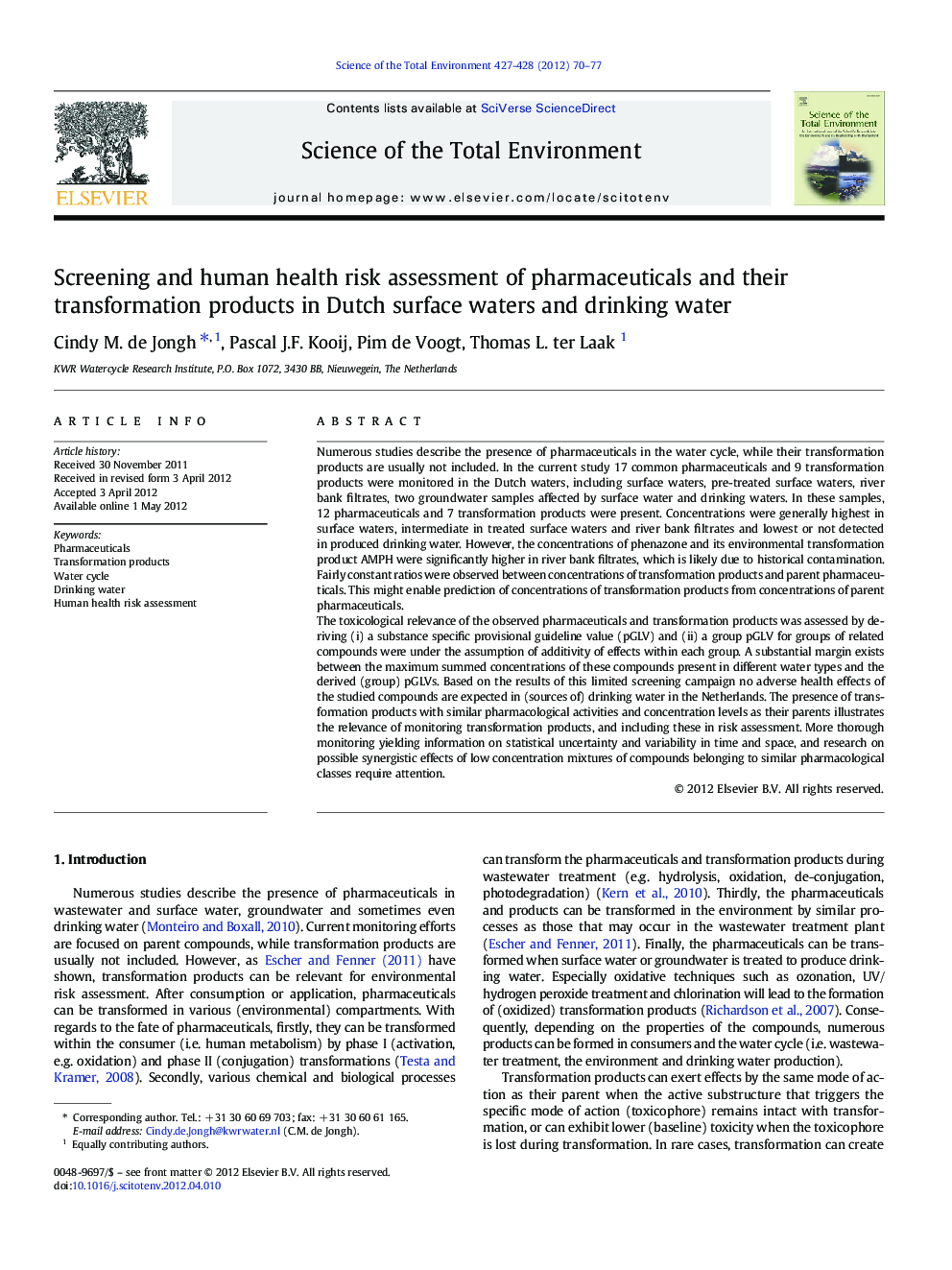| Article ID | Journal | Published Year | Pages | File Type |
|---|---|---|---|---|
| 4429410 | Science of The Total Environment | 2012 | 8 Pages |
Numerous studies describe the presence of pharmaceuticals in the water cycle, while their transformation products are usually not included. In the current study 17 common pharmaceuticals and 9 transformation products were monitored in the Dutch waters, including surface waters, pre-treated surface waters, river bank filtrates, two groundwater samples affected by surface water and drinking waters. In these samples, 12 pharmaceuticals and 7 transformation products were present. Concentrations were generally highest in surface waters, intermediate in treated surface waters and river bank filtrates and lowest or not detected in produced drinking water. However, the concentrations of phenazone and its environmental transformation product AMPH were significantly higher in river bank filtrates, which is likely due to historical contamination. Fairly constant ratios were observed between concentrations of transformation products and parent pharmaceuticals. This might enable prediction of concentrations of transformation products from concentrations of parent pharmaceuticals.The toxicological relevance of the observed pharmaceuticals and transformation products was assessed by deriving (i) a substance specific provisional guideline value (pGLV) and (ii) a group pGLV for groups of related compounds were under the assumption of additivity of effects within each group. A substantial margin exists between the maximum summed concentrations of these compounds present in different water types and the derived (group) pGLVs. Based on the results of this limited screening campaign no adverse health effects of the studied compounds are expected in (sources of) drinking water in the Netherlands. The presence of transformation products with similar pharmacological activities and concentration levels as their parents illustrates the relevance of monitoring transformation products, and including these in risk assessment. More thorough monitoring yielding information on statistical uncertainty and variability in time and space, and research on possible synergistic effects of low concentration mixtures of compounds belonging to similar pharmacological classes require attention.
► Concentration of pharmaceuticals: surface water > raw water > drinking water. ► Transformation products observed in similar concentrations as parents. ► Constant concentration ratios of transformation products to parents. ► Derived guideline values take into account additive toxic effects of mixtures. ► Substantial margin of safety between levels found in water and guideline values.
